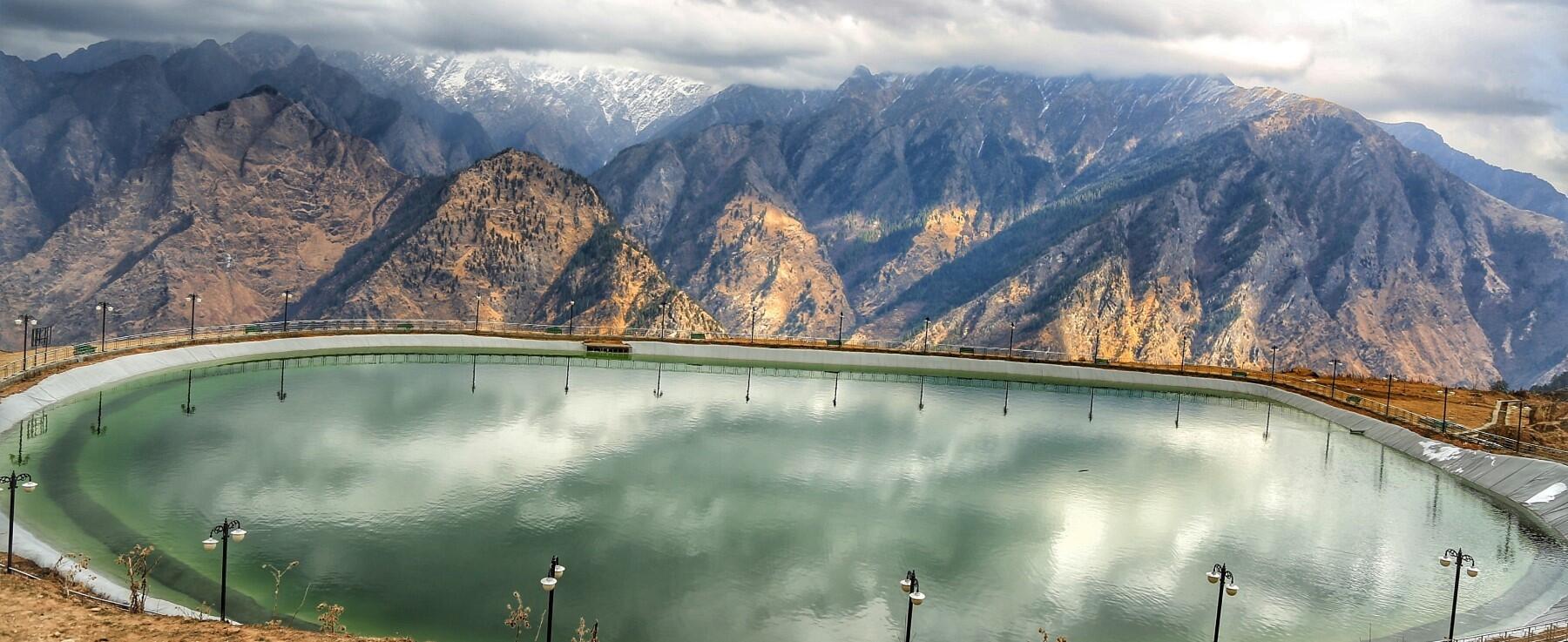
Sorry, we couldn't find anything that matches your search.
Destination

Famous Places to Explore in Hyderabad
A vibrant city with the imposing...

Raipur Tourist Places | Best Place to Visit
The stronghold of several erstwhile...

Ahmedabad
Declared as India's first UNESCO World...
#
Someshwar
Any visit to Kausani is incomplete without a trip to the nearby rock-cut shrine of Someshwar. Located on the outskirts of the main city, the temple is dedicated to Lord Shiva and was constructed by the founder of the Chand dynasty in the 11th century. The name of the temple is derived from the combination of the names of Raja Som Chand, who founded the town, and the name of the presiding deity, Maheshwar, or Lord Shiva. Surrounded by the snow-capped Himalayas, the temple enthrals one with its picturesque location. The chiming bells and fragrant incense add to the spiritual and peaceful experience of visiting Someshwar. There is a well nearby, which is believed to be a wishing well.

Baijnath
Situated on the banks of the pristine Gomti river, Bajinath lies at an altitude of 1,130 m. Best known for the famous 13th-century temple dedicated to Lord Shiva, who is worshipped as Vaidyanath or the Lord of physicians. The Baijnath temple has been a significant spiritual site ever since its construction in 1204 AD. It is a beautiful example of early medieval north Indian temple architecture known as Nagara style of temples. The two long inscriptions in the porch of the temple indicate that a temple of Lord Shiva existed on the spot even before the present one was constructed.
Bajinath is set amongst the towering Dhauladhar range of the Himalayas and is a popular site for paragliding enthusiasts looking for an adrenaline rush. The entire area is dotted with temples dedicated to various deities that hold great spiritual importance for the local people. Around 3 km from Baijnath, is the famous Tashi Jong Monastery, known for its ornamental terraces and beautiful decorative banners.

Katarmal
Katarmal is home to one of the most important sun temples in the northern state of Uttarakhand, called the Katarmal Surya Temple. The temple stands in a picturesque location near the bridge of the Kosi river. It was built by a Katyuri king called Katarmalla in the 9th century AD. The deity to whom the temple is dedicated here is the old sun god known as Burhaditya or Vraddhaditya. Sculptures of Shiva-Parvati and Laxmi-Narayan have been established in the premises. The temple has a remarkably unique architecture, which includes carved pillars and doors along with intricate stone and metallic sculptures. As can be expected, the temple faces east so that the first rays of the sun fall on the shivling. The main temple is an older structure that is surrounded by 45 smaller shrines. To reach it, one has to trek almost 3 km, crossing Hawalbagh and Matela near Kosi river. The doors of the temple have now been moved to the National Museum in Delhi. The temple is also called Bara Aditya Temple. Lying at an elevation of about 2,116 m above sea level, it is 17 km from Almora.

Bageshwar
The city of Bageshwar is located at the confluence of Rivers Saryu, Gomti and the latent Bhagirathi. It is most popularly recognised as the land of Lord Shiva or Lord Sadashiva, the redeemer of all sins (as He is revered here). Tourists make a beeline for the Baghnath Temple, which is the major attraction. Dedicated to Lord Shiva, it is said the temple has been standing since the 7th century. Built in the Nagara style of architecture, the temple is noted for hundreds of brass bells of different sizes that adorn it. The Chandika Devi Temple, dedicated to Goddess Kali, and the Garud Baijnath (a temple that shares its similarity in architecture to the Jageshwar temple complex) are some other spiritual stopovers nearby. Bageshwar finds a mention in the ancient Hindu text, Puranas, as a place capable of liberating one from the eternal bondage of birth and death.

Joshimath
The sacred town of Joshimath, also called Jyotirmath, attracts a large number of Hindu pilgrims annually. The heart and sanctity of the town is the Jyotirmath or the Shankaracharya Monastery. According to Hindu mythology, Joshimath is one of the four maths, which were established by the Adi Guru Shankaracharya in the 8th century. The main attraction is Kalpavriksha, a tree which is believed to be about 1,200 years old. There are a number of important temples and religious sites here. These include a temple dedicated to Lord Narasimha, an incarnation of Lord Vishnu. There are a host of other important temples which attract a large number of devotees to Joshimath like the Hanuman Mandir, the Gaurishankar Temple, the Ganesh Temple, the Naudevi Temple and the Surya Temple. A large number of trekkers flock to Joshimath as it is the camping base before proceeding onto higher altitudes. The famous Valley of Flowers trek begins from Govind Ghat, which is merely 26 km away from Joshimath. There are a number of camping sites that provide breathtaking views as well. The mighty Alaknanda and Dhauliganga rivers meet at the confluence of Vishnuprayag, which the town of Joshimath overlooks. The Himalayan peaks encircling the town form a majestic background to the divine serenity that envelops the city. The view of Hathi Parvat Peak is especially enchanting.









